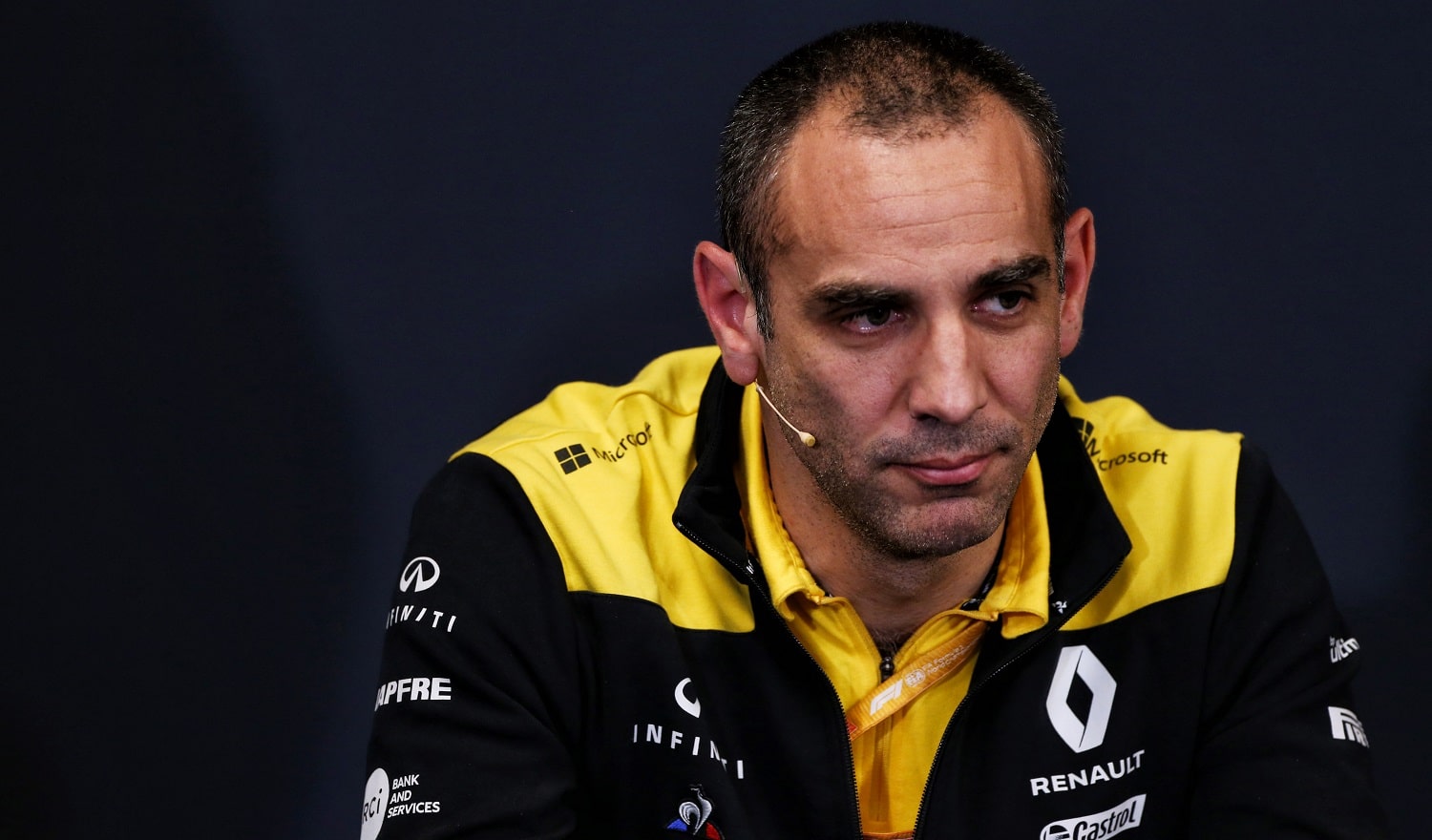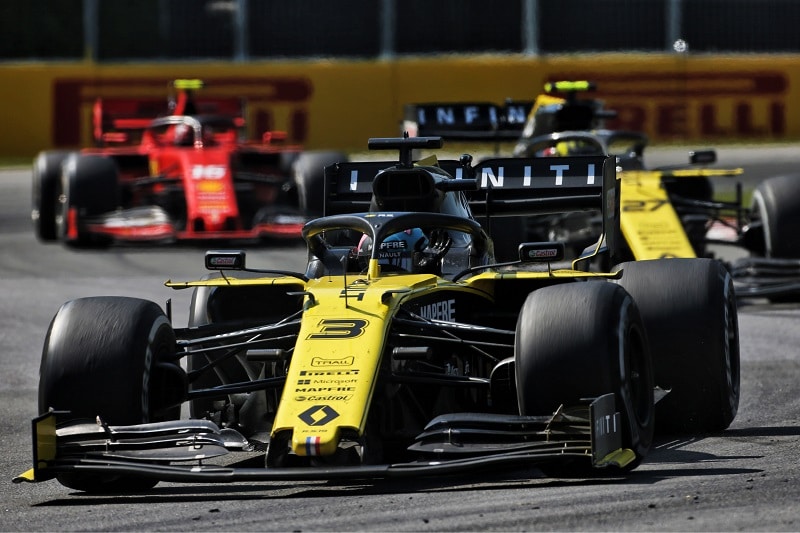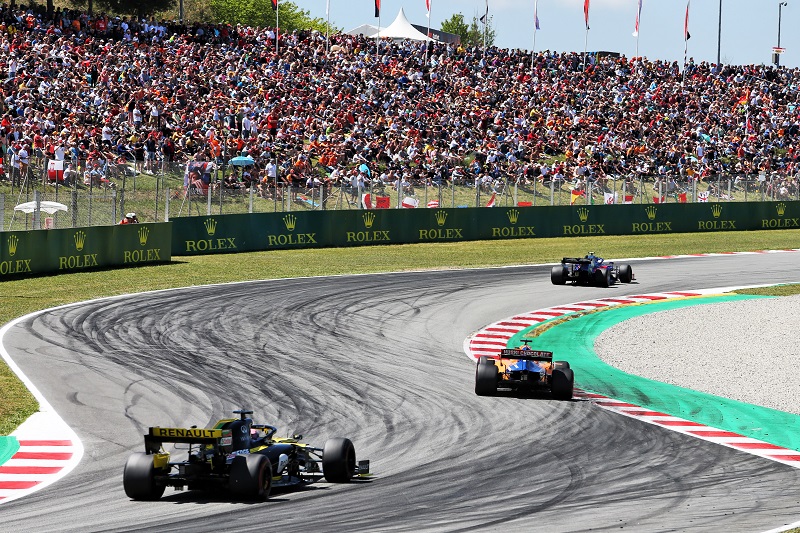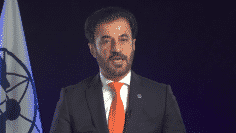
F1: Why Renault’s Fight to the Front has Stalled in 2019
2019 was meant to be the year that Renault hit the ground running ready to bridge the gap between themselves and Mercedes, Ferrari and Red Bull. But alas, the French team’s season could hardly have got off to a worse start, collecting just fourteen points in six races.
The Canadian Grand Prix offered some hope, promoting them from eighth to fifth in the constructors table, doubling their points tally. Yet they remain behind their customer team McLaren. But after finishing 2018 fourth on 122 points, why has 2019 been a year to forget so far for Renault when it was a season that promised so much?
After Renault saw a positive progression since the French manufacturer returned to the sport in 2016: from ninth in 2016, sixth in 2017 to fourth last year, much was expected this season, and at the launch of brand-new Renault R. S. 19, Renault Team Principal Cyril Abiteboul said:
“Launching all these projects while participating in the championship was an incredible challenge, as was getting the major points finished. The final commissioning of the investments was a tremendous achievement and I’m impressed by how everyone has taken to the task. This shows in the momentum we have gathered: ninth in 2016 with eight points, sixth in 2017 with 57 points and fourth last year with 122 points. We go into this season aiming to keep this strong and measured momentum,” – Cyril Abiteboul.
However, things have turned out rather differently for Renault. After delivering such consistent performances in their fight with Haas F1 Team in the latter part of 2018, there has been a drastic change in fortunes for the French outfit. But why have things gone so wrong for them in 2019?
After fielding a solid driver line-up in 2018 of Carlos Sainz Jr and Nico Hulkenberg, Renault F1 Team decided to sign one of the biggest showmen on the grid, in former Red Bull race-winning driver Daniel Ricciardo for a reported £26m alongside Renault F1 staple Hulkenberg. That meant that after delivering so much for the French team last year, Sainz Jr left for the now-rejuvenated McLaren-Renault outfit in place of his childhood hero Fernando Alonso, which despite ending last year as the second-slowest outfit, has now turned out to be a smart move for the Spaniard.

So while in theory it seemed like a good move to sign a disgruntled Ricciardo after the Aussie and Red Bull Racing had their differences moving forward, the impact of signing a £26m contract on a driver cannot be underestimated on a team the size of Renault. Consequently, this meant that some of the planned investments for their 2019 challenger would be delayed, thus having a detrimental impact on the performance of their 2019 challenger.
While the cost of signing Ricciardo was substantial on the team’s performance, more significant was the dramatic departure of president of the Renault-Nissan-Mitsubishi alliance, Carlos Ghosn in January 2019 following his arrest on 19 November 2018 in Tokyo for allegations of false accounting and meddling with Renault’s finances. After Ghosn was formally fired from his post, he was replaced by Jean-Dominique Senard as CEO of the Renault-Nissan-Mitsubishi group. And while Senard is a comprehensive businessman and former CEO of Michelin, he does not have the wealth of someone like Ghosn which would only be detrimental to Renault’s Formula 1 project, as while the French outfit’s 2018 budget was $190m courtesy of Ghosn, it has been further depleted in 2019.
Despite trying to downplay Ghosn’s influence on Renault’s F1 project, Renault Team Principal Cyril Abiteboul admitted to motorsport.com following Ghosn’s arrest in November 2018 that:
“It’s fair to say that was instrumental in the decision to return late in 2015, but obviously it was not one man’s decision: the decision was debated at length in executive committees and it was a decision of the company.” – Cyril Abiteboul
But while publicly there was an attitude of business as usual, Ghosn’s departure and the related scandal could not have come at a worse time for Renault with pre-existing plans to increase their workforce to roughly 700 people. So in the context of huge structural changes at the top of the management programme for Renault as a whole, meeting their pre-subscribed targets for their F1 programme was made even harder in the wake of Ghosn’s untimely exit.
Therefore, Renault has a greater performance deficit compared with the front-runners in 2019 verses 2018, where their average deficit on the fastest laps over the entire 2018 season was 2.12% compared to a 2.78% deficit over the first six races of 2019. So despite the best efforts from Renault over the winter to try and continue the positive trend over recent years, the instability in the leadership and the lack of sustainable funding has contributed to a vastly reduced car performance in 2019.
http://gty.im/1063542280
But not only was there a huge upheaval of senior personnel in the Renault-Nissan group, but inside the Formula 1 team as well, as Bob Bell left his role as technical director in Summer 2018 and was replaced by Nick Chester. This change in technical leadership right in the middle of the design and production of the 2019 F1 car is far from ideal, as the chassis is key to any future hope Renault have to success in 2019 and beyond. And for this to happen during a period when the fundamental aerodynamic concepts required major work was far from ideal inside the Renault F1 outfit.
Unfortunately, this summarises Renault F1 Team’s priorities with the engine being their number one focus, with the chassis a rather distant second. The problem is deepened by the fact that the team have two bases, with the engine designed, developed and honed at Viry-Châtillon near Paris in France, with the car’s chassis developed at Enstone, Oxfordshire. And while many leading Formula 1 teams including five-times F1 champions Mercedes have two different factories, the situation at Renault is different with the two factories in two countries under different or at least semi-different trading status given the uncertainties of Brexit, this may fracture communication further between the two bases.
Therefore, the apparent lack of communication between Viry-Châtillon and Enstone means that the layout of the F1 team is chaotic to say the least. With engine components from the factory in France having to coalesce with the chassis in Enstone, things at Renault have been far from ideal with neither one of the components going off without a hitch.
After starting pre-season testing with relatively strong engine reliability, things have turned sour with Renault’s poor chassis performance has only been hindered by its poor engine performance and reliability, as evidenced at the Bahrain GP when both Nico Hulkenberg and Daniel Ricciardo stopped within 200 yds of each other while running sixth and seventh in the race. The concerns raised following that race, notably the conrod failure plaguing Hulkenberg’s R. S. 19 has meant that the French outfit have turned down their engines down until now and will continue to do so until the French GP when the new parts are available to ensure that they are there when the possibility of a good result is in the offing.
Things have not gone smoothly in the chassis department either as the planned parts for the Spanish GP were not signed off in time, thus meaning that while there were major upgrades planned for the Barcelona race weekend, they never materialised which was reflected by their true lack of performance. This has been reflected by the fact that Renault have a car that is only fifty four thousandth of a second faster after the Spanish GP than it ended the 2018 season at Abu Dhabi.

But the horizons are now looking up for Renault as they are now starting to get the necessary solutions seeping through with the parts that were originally planned for the Spanish GP in May were approved at the post-Spanish GP test and will be introduced in time for the French GP later this month along with a much-improved and upgraded engine. So while Renault find themselves in a pretty dire state after the first six rounds of the year, things are beginning to look up in their midfield fight for the rest of the season.
After much was promised by Renault with a bold vision and statement made at the beginning of the season that the French manufacturer was putting on the roof for their F1 project, the evidence from the first six races is that while putting on the roof, the walls are beginning to crumble. But maybe in doing so, it will allow Renault to knock out the walls and build a bigger house with a much larger workforce which will allow them to have greater purpose in making a success of their F1 dream.
However, the structural foundations of Renault are far from secure with the departure of Carlos Ghosn has come at a huge financial cost to Renault, with the company also having to manage the Nissan e. dams Formula E Team, means that Renault need to find a way of getting more money. But as Renault have taken a step backwards this year, the question must be asked whether signing Daniel Ricciardo was a mistake as the money used to pay Australian’s salary could be better used to help develop their 2019 challenger? In the end this is for Renault to decide, but with a budget significantly smaller than Mercedes and Ferrari, Renault needs to find a viable strategy to overcome what has been a season of nightmares so far. And while there is light at the end of the tunnel, it will be a long road to recovery for the once great team.



![Private: [ID: 71rYi-xncgM] Youtube Automatic](https://motorradio-xijqc.projectbeta.co.uk/wp-content/uploads/2024/08/private-id-71ryi-xncgm-youtube-a-1-360x203.jpg)
![Private: [ID: 1SfHxvC8Doo] Youtube Automatic](https://motorradio-xijqc.projectbeta.co.uk/wp-content/uploads/2024/07/private-id-1sfhxvc8doo-youtube-a-1.jpg)
![Private: [ID: H6XRkf6kROQ] Youtube Automatic](https://motorradio-xijqc.projectbeta.co.uk/wp-content/uploads/2024/07/private-id-h6xrkf6kroq-youtube-a-1-360x203.jpg)
![Private: [ID: Kb6w-qAmKls] Youtube Automatic](https://motorradio-xijqc.projectbeta.co.uk/wp-content/uploads/2023/12/private-id-kb6w-qamkls-youtube-a-360x203.jpg)
![Private: [ID: CcpwYw20k3k] Youtube Automatic](https://motorradio-xijqc.projectbeta.co.uk/wp-content/uploads/2024/07/private-id-ccpwyw20k3k-youtube-a-360x203.jpg)

![[ID: x1SiRC5jhW4] Youtube Automatic](https://motorradio-xijqc.projectbeta.co.uk/wp-content/uploads/2022/04/id-x1sirc5jhw4-youtube-automatic-360x203.jpg)
![[ID: lMZ8lAeLubk] Youtube Automatic](https://motorradio-xijqc.projectbeta.co.uk/wp-content/uploads/2022/04/id-lmz8laelubk-youtube-automatic-360x203.jpg)
![[ID: GAYCcnqyFo4] Youtube Automatic](https://motorradio-xijqc.projectbeta.co.uk/wp-content/uploads/2022/04/id-gayccnqyfo4-youtube-automatic-360x203.jpg)
![[ID: Gg142H296QY] Youtube Automatic](https://motorradio-xijqc.projectbeta.co.uk/wp-content/uploads/2022/04/id-gg142h296qy-youtube-automatic-360x203.jpg)





